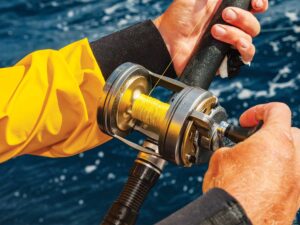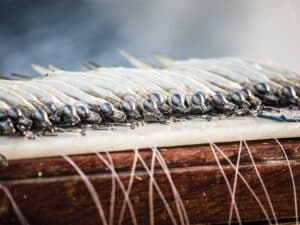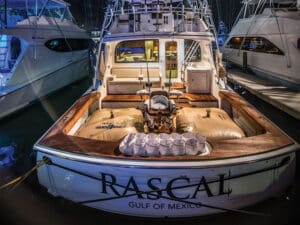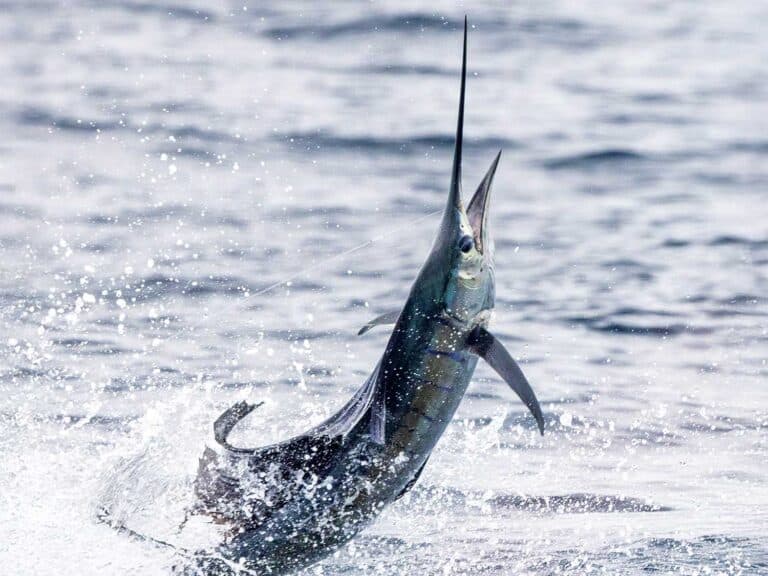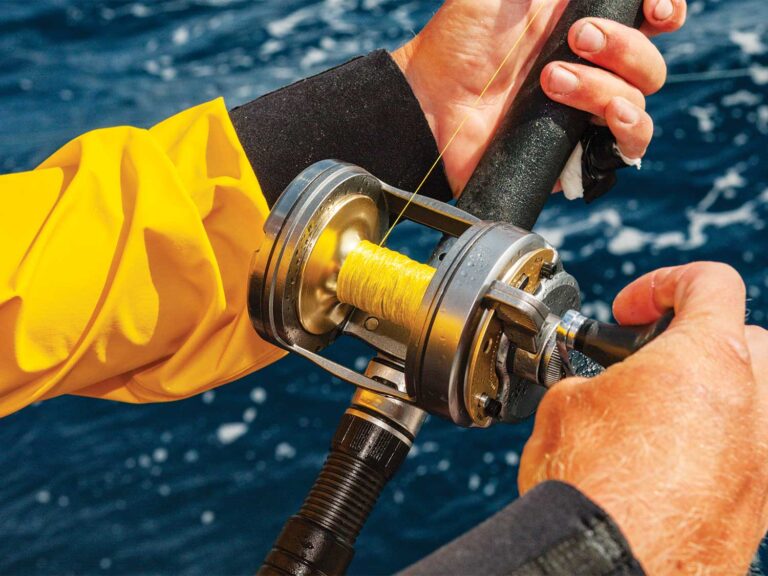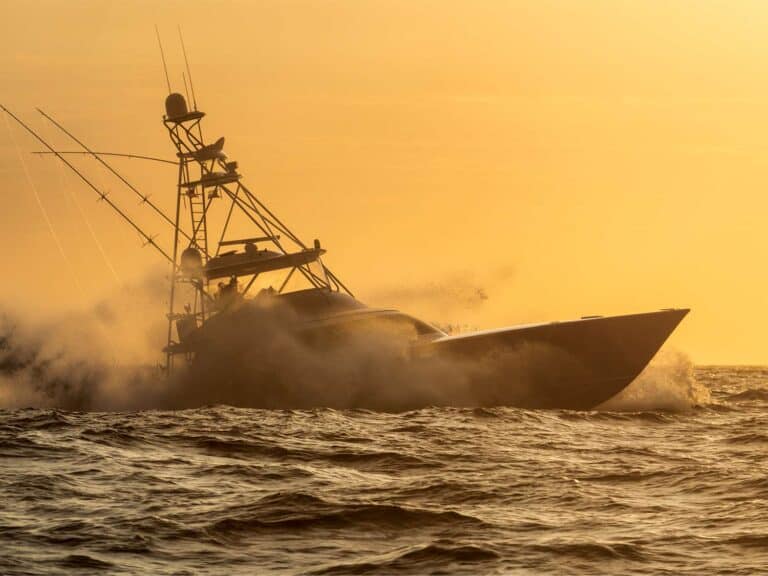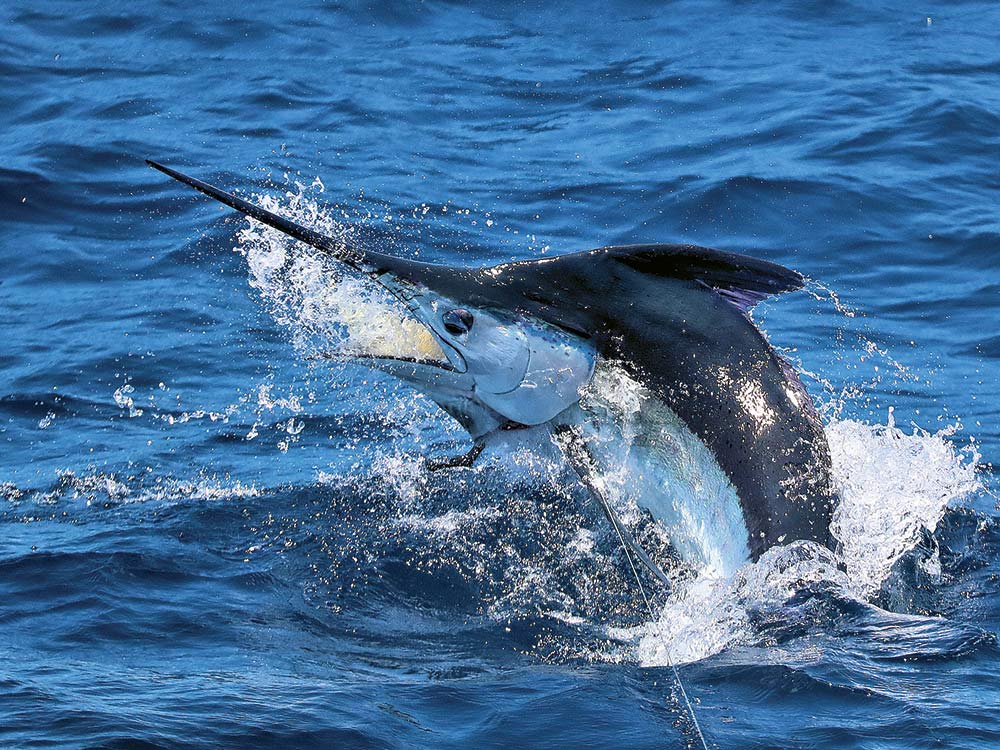
“Let’s go marlin fishing.”
That’s how it usually starts. The next thing you know, somebody hands you a box of lures and says, “Let’s build a trolling spread with these.” Now the hard work really begins: Choosing which lures to use — when, where and, most important, why — are all questions you need to ask yourself before you even leave the dock.
Teasers Versus Lures
One of the first concepts to tackle is whether you’re going to pull your lures with hooks in them or use them as teasers, and if so, are you going to pitch-bait all fish that come up? If you decide to pitch-bait, be sure you’re pulling good teasers and not just good luresIf the lure constantly digs in and grabs the water as you’re trying to snatch it away from a hot blue marlin, it’s going to make the process of switching that fish to a bait much more difficult. I want to be able to tease that marlin all the way in to the boat, which means I want a lure with a cupped or flat head that will pop to the surface as I speed up the retrieve, making it much easier to keep it away from a fired-up fish.
Size Matters
Like most other captains, I prefer to pull my largest teasers and lures closest to the boat and get progressively smaller as we move back in the spread, for two reasons. First, a larger, more aggressive lure is easier for the fish to pick up in close, with all the white water and commotion from the boat around it. And when you’re teaser-fishing, the line angle is better to keep the lure away from the fish as it teases in.
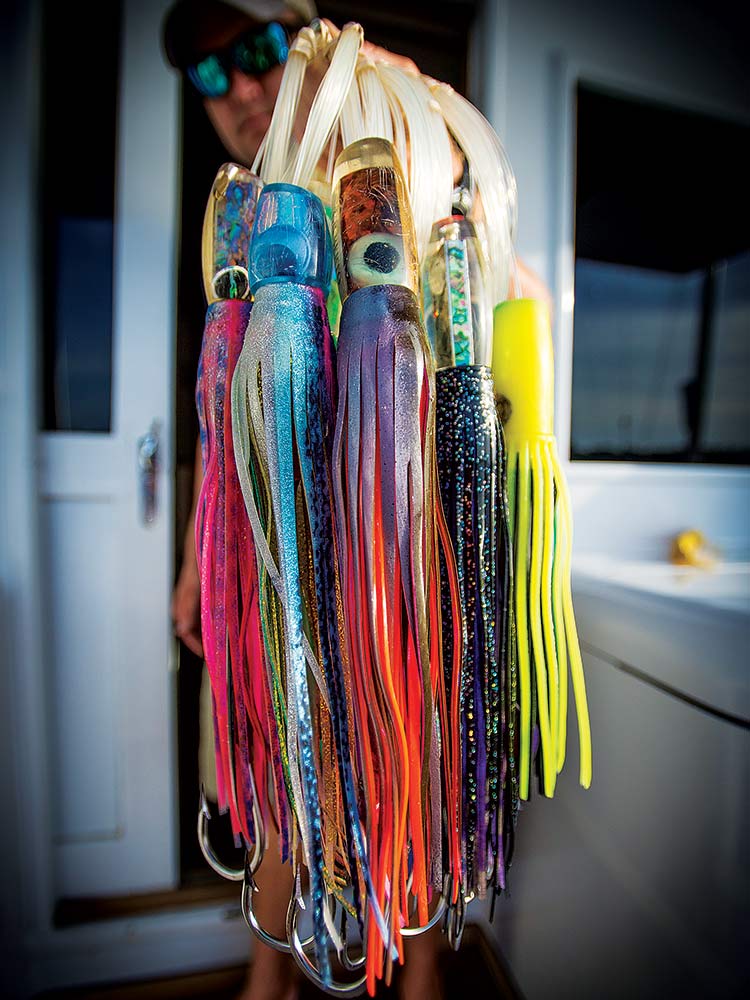
For the lures armed with hooks, be sure to match the size of the hook to the lure: Bigger lures can still swim well with big hooks, but smaller lures can become bogged down and lose their fish-attracting action with heavy hooks. However, be sure to use a hook that’s large enough to fit around the jawbone of your target species. Small hooks are fine for dolphin, tuna and small marlin, but if you want a big blue, be sure the hook itself is large enough to do the job. I prefer single hooks rather than double hook-sets because they are safer for the crew and the fish, but that’s a personal preference.
Working with the Weather
Many people think that lure-fishing is a “set it and forget it” way to chase marlin, but in reality, this is pretty far from the truth. Every time the boat changes from an up-sea to a down-sea tack, or as the wind and seas pick up or lay down during the day, you should be adjusting the lures so they ride on the face of the waves behind the boat. This means reeling them in or letting them back a few feet, or pulling the outrigger halyards up or down. The best in the game work hard at keeping their lures swimming well all day long in various sea conditions.
Slants, Chuggers, Jets and the Wide Range
As a general rule of thumb, slant-headed lures work well in calmer conditions and closer to the boat, where they can swim aggressively. They tend to run more erratically as they try to find their way through the water compared with a chugger-style lure, which has a tighter side-to-side swimming action. Slant-heads can raise a lot of marlin but can be harder for a fish to actually eat. Fish these lures close to the boat off the flat lines near the teasers, or long from the riggers in calm seas for added action in the spread.
Cup-faced chugger-heads swim well in calm and rough conditions, and will typically run straight and true with a smoking bubble trail. They’re much easier for a fish to home in on and actually eat, so they are best on the short- or long-rigger positions. In really rough seas, pull the halyards down a bit to keep them running well and not tumbling out of the water.
Jet- and bullet-headed lures work best when fished well back in the spread from the long-rigger or shotgun center-rigger spots. They are straight runners and accomplish their goal of being extremely easy for a fish to eat. Jets and bullets are a great choice for adding wahoo or tuna to the fish box too. And then there’s the Mold Craft Wide Range. With a flat face, this lure will swim well in just about any position in the spread, and it also works equally well as a teaser. Its name implies what it does: It catches a wide range of fish from a wide range of positions in the spread. Just about any color combination works great too.
Lure-fishing isn’t just drag and snag: Knowing where to position each lure in the spread, based on the head shape, taking into account the sea conditions, and then making constant adjustments throughout the day will help you raise and hook more billfish than ever before.
